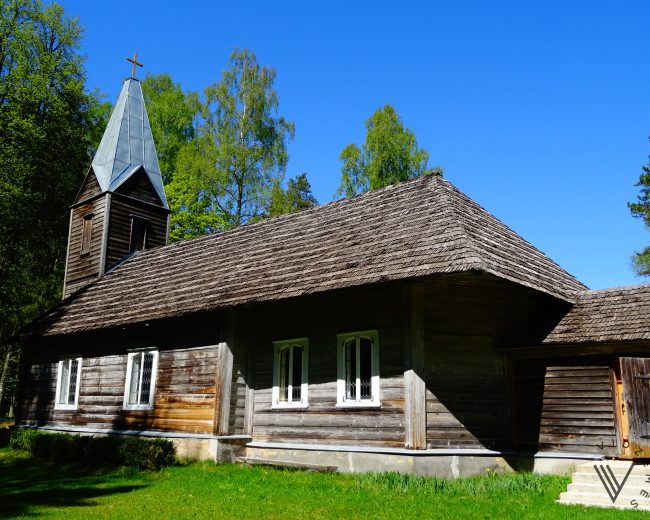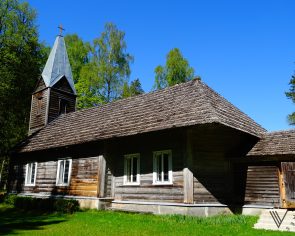Apšu (Lodes) Evangelical Lutheran Church
It is one of the best-preserved log churches in Latvia. This church has survived many times and, despite its difficulties, has managed to preserve countless cultural relics.
A large number of visitors can view the church from the outside. The church is available from the inside for small groups. Please contact the church in advance to agree upon the visit.
The beginnings of Apšu church can be traced back to the 13th century, when the Christian faith began to be introduced. In order to attract local people more easily, the first Catholic churches were built in ancient Latvian places of worship, and so the Apši church was built. Bānūži mound is situated close to the church. On the mound there is a place of worship of local importance – a Holy Spring. Even in the 18th century, people brought donations to Apši church – beads, pieces of ribbon and coins and put them on the altar. The Lode Evangelical Lutheran church was mentioned in 1536, but the first church in Apši was built in 1613 as a branch church in Skujene. It was very simple, built according to the model of peasant houses. It was without a floor and seats.
In the 1960s, the church was looted several times: the chandeliers, the chalice and the altar dishes disappeared, the baptismal font was desecrated. In 1987, shots were taken here for the film "Aija" based on the motifs of Jānis Jaunsudrabiņš's trilogy. One source of information states that the filmmakers even modified the roof of the church to shoot better scenes. At the end of the 1990s, a crucifix made by Latgale woodcarvers was erected outside the prayer house.
The church was built in 1780 from oak logs. In 1893, master A. Laumanis made new church equipment – an altar, pulpit and organ prospectus. Jēkabpils organ master Mārtiņš Krēsliņš built an organ in the church in 1890. The bell made in Germany in 1895 was given as a gift by F.U. Lazdiņš. At the beginning of the 1930s, the straw roof of the church was replaced by wooden shingles. The last church equipment was made around 1960. At the end of the 1990s, extensive restoration works were carried out in the church. The tower, parish rooms and sacristy roof were renovated. Lead-glazed windows were changed. The altar painting "Christ on the Cross" was in the old altar. In the current altar there is an oleograph "Resurrection of Christ". The organ is uniquely placed next to the trifurium due to the low ceiling. The original door key forged by a blacksmith has been preserved.
The church has the status of an architectural monument of national importance. Nearby, you can see the ancient Taurenes Lodes Apšu cemetery with a restored, snow-white chapel.
The place is available at any time of the year.


Working time
The church is always accessible from the outside.
Open to visitors during the service on the 2nd and 4th Sunday of every month at 3pm.

